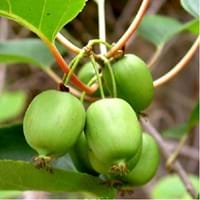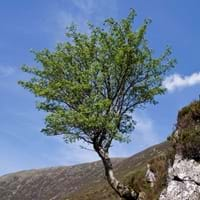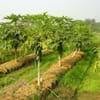Life Span
Perennial
Perennial
Origin
Eastern Asia
Asia, Europe, Northern Africa
Types
Actinidia arguta, Actinidia giraldii, Actinidia hypoleuca
Sorbus aucuparia fenenkiana, Sorbus aucuparia glabrata, Sorbus aucuparia praemorsa
Habitat
Dappled Shade, open Woodlands
Temperate Regions
USDA Hardiness Zone
3-8
3-7
Sunset Zone
1a, 1b, 2a, 2b, 3a, 3b, 4, 5, 6, 7, 8, 9, 14, 15, 16, 17, 18, 19, 20
A1, A2, A3, 1a, 1b, 2a, 2b, 3a, 3b, 4, 5, 6, 7, 8, 9, 10, 14, 15, 16, 17
Habit
Vining/Climbing
Oval or Rounded
Flower Color
White, Ivory
White
Flower Color Modifier
Bicolor
Bicolor
Fruit Color
Green, Yellow green
Orange, Yellow
Leaf Color in Spring
Green, Dark Green
Green
Leaf Color in Summer
Dark Green
Green
Leaf Color in Fall
Dark Green
Dark Green
Leaf Color in Winter
Light Green
Dark Green
Plant Season
Spring, Summer, Fall
Spring, Fall
Sunlight
Full Sun, Partial Sun
Full Sun, Partial Sun
Growth Rate
Medium
Medium
Type of Soil
Loam
Clay, Loam, Sand
The pH of Soil
Neutral
Acidic, Neutral
Soil Drainage
Well drained
Average
Bloom Time
Spring, Late Spring, Early Summer
Late Spring
Tolerances
Shade areas
Not Available
Where to Plant?
Ground, Pot
Ground
How to Plant?
Grafting, Stem Cutting
Budding, Grafting, Stem Cutting
Plant Maintenance
Low
Medium
Watering Requirements
Average Water Needs, Requires regular watering
Do Not over Water, Water in the early morning hours
In Summer
Regular watering required
Lots of watering
In Spring
Moderate
Moderate
In Winter
Average Water
Average Water
Soil pH
Neutral
Acidic, Neutral
Soil Type
Loam
Clay, Loam, Sand
Soil Drainage Capacity
Well drained
Average
Sun Exposure
Full Sun, Partial Sun
Full Sun, Partial Sun
Pruning
Remove damaged leaves, Remove dead branches, Remove dead leaves
Remove dead or diseased plant parts, Trim each shoot back to the first set of leaves
Fertilizers
Apply 10-10-10 amount, fertilize twice a year
All-Purpose Liquid Fertilizer, Doesn't require fertilization when grown in rich soil
Pests and Diseases
Botrytis head rot, Japanese Beetles, Leaf Rollers, Nematodes, Phytophthora, Root rot, Sclerotinia blight, Spider mites, Thripes
Aphids, blister mites, Canker, fireblight, sawflies, Silver leaf
Plant Tolerance
Shade areas
Not Available
Flower Petal Number
Single
Single
Foliage Texture
Medium
Fine
Foliage Sheen
Glossy
Matte
Allergy
Not Available
Anxiety, Depression, High blood cholestrol, High blood pressure, Pain, Stress
Aesthetic Uses
Cottage Garden
along a porch, deck or patio, Showy Purposes
Beauty Benefits
Not Available
Not Available
Environmental Uses
Shadow Tree
Air purification, Food for birds, Shadow Tree
Medicinal Uses
Antioxidants, Fiber, Folate, Rich in Potassium, Vitamin C
Diarrhea, Inflammation, Laxative, Urinary tract problems, Vitamin C
Part of Plant Used
Fruits
Bark, Fruits, Wood
Other Uses
Grown for shade
Used for its medicinal properties, Used for woodware
Used As Indoor Plant
No
No
Used As Outdoor Plant
Yes
Yes
Garden Design
Edible, Feature Plant, Vine
Feature Plant, Mixed Border, Topiary / Bonsai / Espalier
Botanical Name
ACTINIDIA arguta
Sorbus aucuparia
Common Name
Hardy Kiwi
Rowan, Mountain ash
In Hindi
हार्डी कीवी
रोवाण पौधा
In German
Hardy Kiwi
Rowan Tree
In French
kiwai
Rowan Tree
In Spanish
kiwi hardy
Rowan Tree
In Greek
σκληραγωγημένα ακτινίδια
Rowan Tree
In Portuguese
kiwi Hardy
Árvore de Rowan
In Polish
hardy kiwi
Rowan Tree
In Latin
Hardy kiwi
Rowan ligno
Phylum
Magnoliophyta
Magnoliophyta
Class
Magnoliopsida
Magnoliopsida
Family
Actinidiaceae
Rosaceae
Clade
Angiosperms, Asterids, Eudicots
Angiosperms, Eudicots, Rosids
Tribe
Not Available
Not Available
Subfamily
Actinidiaceae
Not Available
Number of Species
Not Available
Not Available
Season and Care of Hardy Kiwi and Rowan Tree
Season and care of Hardy Kiwi and Rowan Tree is important to know. While considering everything about Hardy Kiwi and Rowan Tree Care, growing season is an essential factor. Hardy Kiwi season is Spring, Summer and Fall and Rowan Tree season is Spring, Summer and Fall. The type of soil for Hardy Kiwi is Loam and for Rowan Tree is Clay, Loam, Sand while the PH of soil for Hardy Kiwi is Neutral and for Rowan Tree is Acidic, Neutral.
Hardy Kiwi and Rowan Tree Physical Information
Hardy Kiwi and Rowan Tree physical information is very important for comparison. Hardy Kiwi height is 550.00 cm and width 90.00 cm whereas Rowan Tree height is 1,000.00 cm and width 800.00 cm. The color specification of Hardy Kiwi and Rowan Tree are as follows:
Hardy Kiwi flower color: White and Ivory
Hardy Kiwi leaf color: Green and Dark Green
Rowan Tree flower color: White
- Rowan Tree leaf color: Green
Care of Hardy Kiwi and Rowan Tree
Care of Hardy Kiwi and Rowan Tree include pruning, fertilizers, watering etc. Hardy Kiwi pruning is done Remove damaged leaves, Remove dead branches and Remove dead leaves and Rowan Tree pruning is done Remove dead or diseased plant parts and Trim each shoot back to the first set of leaves. In summer Hardy Kiwi needs Regular watering required and in winter, it needs Average Water. Whereas, in summer Rowan Tree needs Lots of watering and in winter, it needs Average Water.





